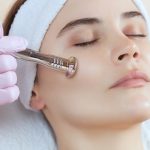
One part of the radiation emitted by the sun is ultraviolet (UV). Ultraviolet radiation is invisible. There are well-documented studies that link it to the appearance of skin cancers and to the wrinkles, discoloration, and sagging that appear on the skin over the years (the greatest percentage of aging that occurs in sun-exposed parts of the body, e.g. face, neck, back of hands, and is due to the sun).
To better study UV, it has been arbitrarily divided into three parts: UVC, UVB and UVA. UVA reaches the earth's surface, with significant intensity from early morning to late afternoon. UVB is filtered to a certain extent in the atmosphere but reaches the earth - with greater intensity between 11:00 and 15:00. UVC is absorbed in the upper layers of the atmosphere and under normal conditions does not reach the earth's surface.
To protect ourselves from the adverse effects of the sun, we must avoid prolonged activities in the sun without protection. (clothes, hat, glasses). Our well-known products also offer protection sunscreen. These contain filters that either reflect radiation (physically) or absorb it (chemically)It is important that they cover to the greatest extent both UVB and UVA, and even the longer end of UVA.
It also matters Reapply sunscreen when we are in the sun for many hours, sweating, or swimming. There is a discussion about the possibility Sunscreen use may be associated with low vitamin D levels. In Greece, to have normal levels of vitamin D, a few minutes of daily exposure to a small area of the body (e.g. hands) is enough.
H American Academy of Dermatology Moreover, he suggests that we not rely on sun exposure to increase vitamin D levels but on proper nutrition and supplements if these are necessary (e.g. bedridden people who are always indoors).
Marita Kosmadaki – Dermatologist-Venereologist, PhD and Scientific Associate of "A. Syggros" Hospital





No comment yet, add your voice below!